Introduction
Yoshitomo Nara is one of the most influential and popular contemporary artists in Japan and beyond. His paintings, sculptures, and drawings of childlike figures with expressive eyes and sometimes menacing expressions have captivated audiences around the world. But what makes his art so unique and appealing? Yoshitomo Nara incorporates elements of ukiyo-e, a traditional genre of Japanese art, into his modern and pop culture-inspired works, creating a fascinating dialogue between past and present.
What is Ukiyo-e?
Literally meaning “pictures of the floating world,” Ukiyo-e is a genre of Japanese art that thrived from the 17th to the 19th centuries. This art form encompasses woodblock prints and paintings depicting a variety of subjects, including beautiful women, kabuki actors, sumo wrestlers, landscapes, flora and fauna, and erotica. Ukiyo-e captured the hedonistic and urban lifestyle of the common people during the Edo period, a time when Japan was under the rule of the Tokugawa shogunate and isolated from the rest of the world. Its influence extended to many Western artists like Vincent van Gogh, Claude Monet, and Henri de Toulouse-Lautrec, who were captivated by its bold colors, stylized forms, and dynamic compositions.
Want to know more? Here are the 12 Most Important Ukiyo-e Artworks of All Time and 11 Most Influential Ukiyo-e Artists: Masters of Japanese Woodblock Prints.
How Does Yoshimoto Nara Use Ukiyo-e in His Art?
Yoshimoto Nara was born in 1959 in Hirosaki, a city in the northern part of Japan’s main island, Honshu. Growing up in a rural area, he often found himself alone, spending time drawing and listening to music. Exposure to Western culture came through the American military radio station, alongside magazines and records his father acquired during travels. His fascination with Japanese art, particularly ukiyo-e, grew as he explored it in books and museums. His formal art education took place at the Aichi Prefectural University of Fine Arts and Music, followed by studies at the Kunstakademie Düsseldorf in Germany. It was there he encountered the Neo-Expressionist movement and the works of artists like Anselm Kiefer and A.R. Penck.
Nara’s art is often seen as part of the Japanese Pop art movement, which emerged in the 1990s and included artists such as Takashi Murakami and Yoshitaka Amano. These artists combined elements of manga, anime, kawaii (cute) culture, and consumerism with references to Japanese history, folklore, and religion. Nara’s art, however, is more personal and introspective than that of his peers. He draws inspiration from his childhood memories, his emotions, his musical tastes, and his spiritual beliefs. He also incorporates elements of ukiyo-e in his art, such as:
- The use of flat and bright colors, often contrasting with dark backgrounds or outlines.
- The depiction of single or isolated figures, often facing the viewer or looking sideways, with minimal or no background.
- The expression of the inner world of the characters, often through their eyes, which can convey innocence, anger, sadness, or mischief.
- The inclusion of text, such as titles, slogans, lyrics, or quotes, which add meaning or irony to the images.
- The creation of series or variations on the same theme, such as portraits of girls, dogs, or birds, which show different moods or aspects of the same subject.
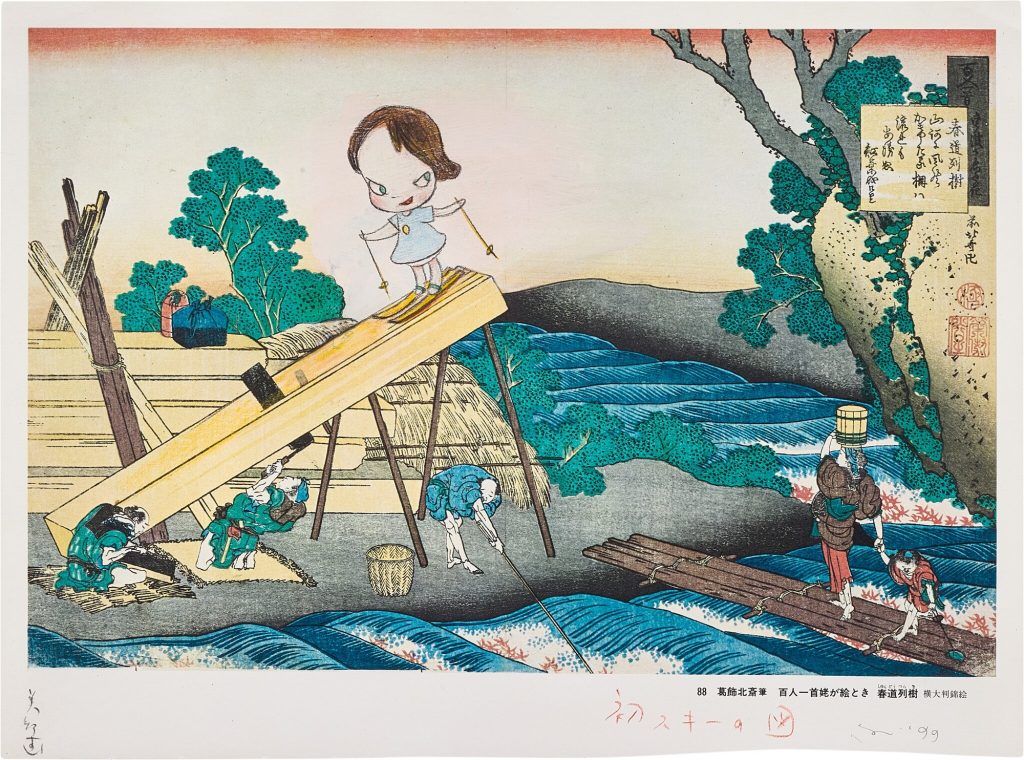
Many of Yoshimoto Nara’s artwork have commanded high prices at auction including the UKIYO artwork shown below which fetched $200,000 at a Sotheby’s auction on 22 June, 2021.
Examples of Yoshimoto Nara’s Artwork
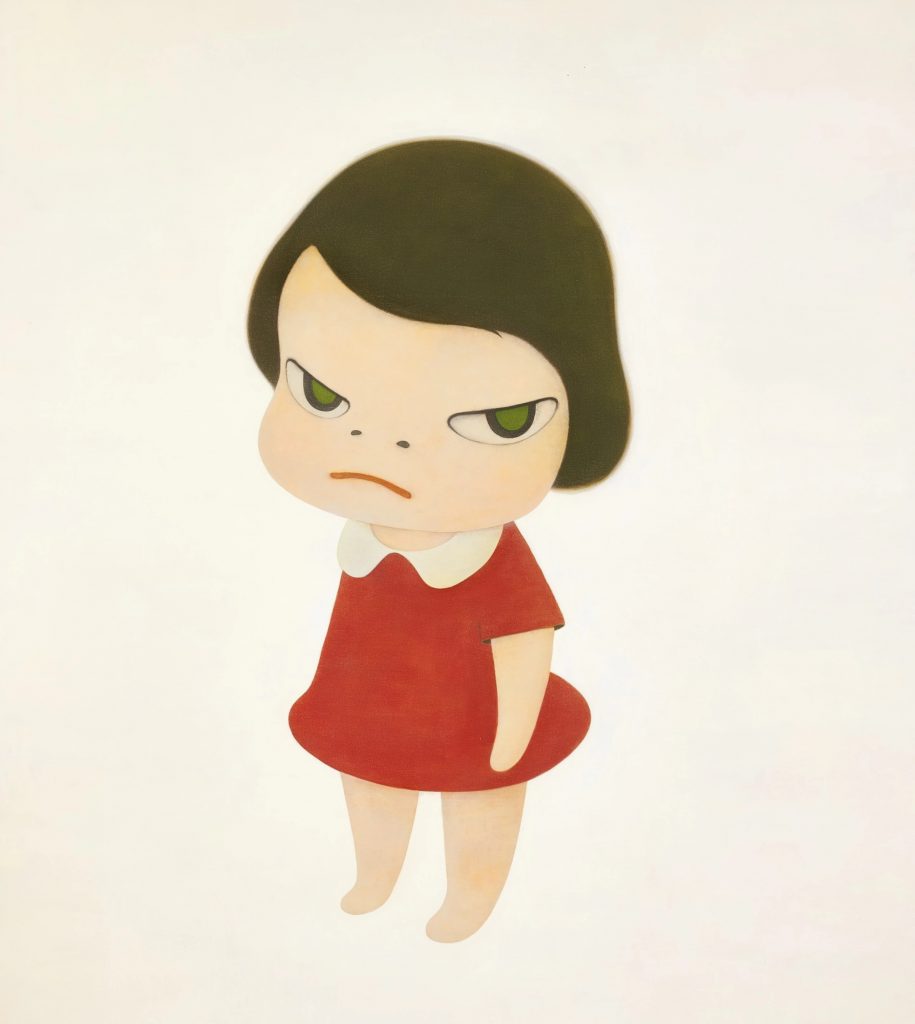
Knife Behind Back (2000)
Yoshitomo Nara’s “Knife Behind Back” is a monumental work that stands as a significant piece in contemporary art, comparable to Warhol’s Marilyns and Lichtenstein’s blondes. Among the artist’s largest canvases featured in auctions, it portrays a deceptively innocent subject with an unseen, yet implied, weapon, enhancing the painting’s menacing aura. This absence heightens the sense of threat, symbolizing the unexpected power and radical potential of youth and imagination. Exemplifying Nara’s iconic theme of rebellious yet captivating children, the painting’s exquisite execution and imposing size add to its impact, subtly aligning its young protagonist with historical figures like Judith, Lucretia, and Charlotte Corday, but with a unique twist: her hidden knife suggests a sophisticated, empowered stance.
I kind of see the children among other, bigger, bad people all around them, who are holding bigger knives.
Yoshitomo Nara
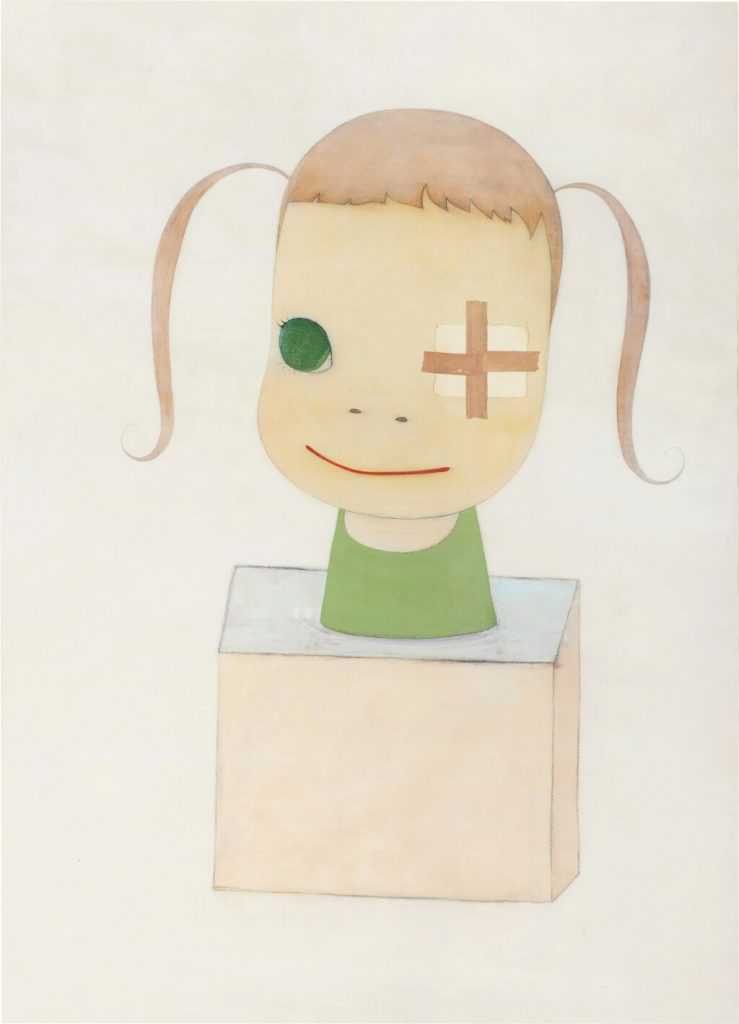
Sorry, Just Couldn’t Draw Left Eye! (2003)
Yoshitomo Nara’s 2003 artwork “Sorry, Just Couldn’t Draw Left Eye!” displays his unique style. It features a young girl’s innocent and serene expression. The piece shows Nara’s skillful use of materials. It has striking details like a green eye and an eye patch against a soft background. This creates a captivating glimpse into childhood. Influenced by children’s books, Nara uses this style to tell stories with single images. This painting explores solitude, rebellion, and innocence, key themes in his work. After returning to Japan from Germany in 2000, Nara’s style subtly shifted. The artwork has softer features, a gentle smile, and playful hair. This marks the refinement in his later works. Featured in the “Japan Pop” exhibition at the Helsinki City Art Museum, the piece shows Nara’s global appeal. It skillfully portrays the surreal nature of childhood on a large scale.
“Sorry, Just Couldn’t Draw Left Eye!” first sold at auction in February 2007 for 90,000 GBP. Incredibly it resold at a Sotheby’s auction in May 2022 for an astounding 1,008,000 USD.
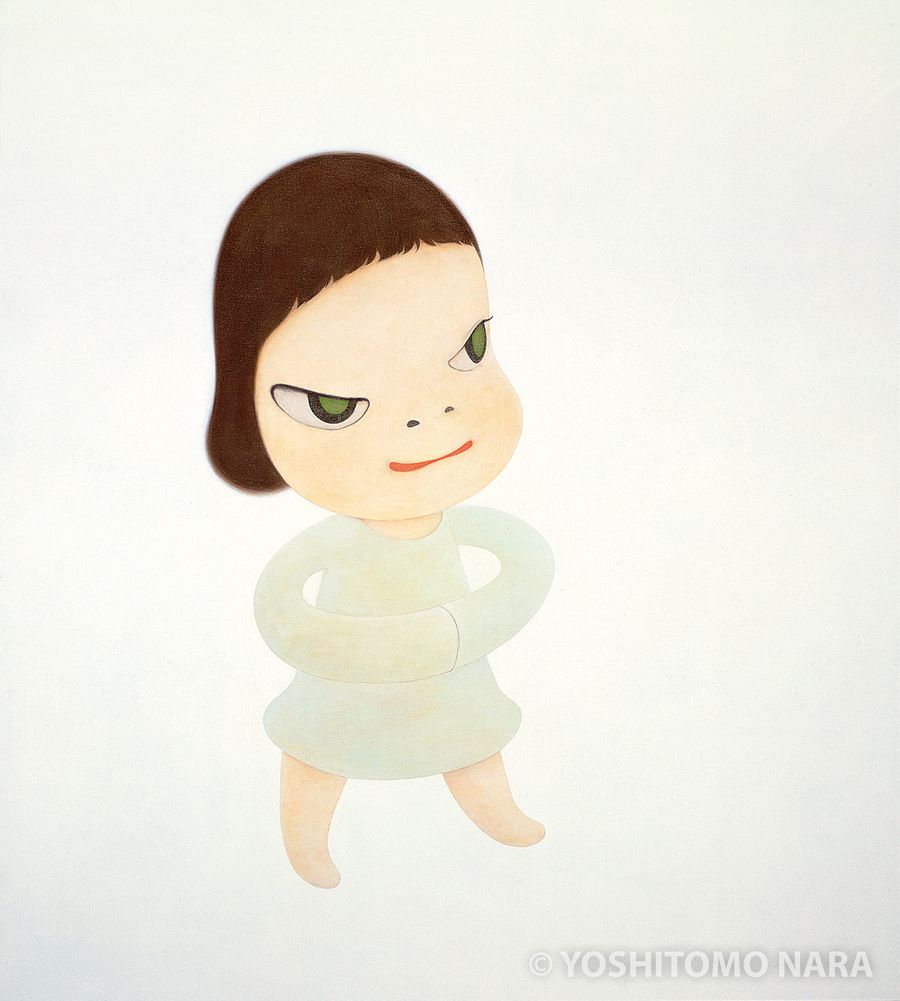
Strait Jacket (2000)
Once gain, Nara’s characters, often depicted with oversized heads and piercing eyes, convey a mix of vulnerability and latent aggression. The title “Strait Jacket” suggests themes of constraint or inner turmoil, which is a recurring motif in Nara’s work. His art is influenced by his childhood experiences in post-World War II Japan and often reflects themes of solitude, rebellion, and resilience.
As with many of Nara’s works, “Strait Jacket” likely continues this exploration, using the image of a child to challenge the viewer’s perceptions of innocence and constraint. The painting might be seen as a commentary on societal pressures or the loss of innocence, a common thread in Nara’s artistic narrative.
“Strait Jacket” (the acrylic painting) is not to be confused with the pencil print in an edition of 35 called “Straight Jacket” shown below.
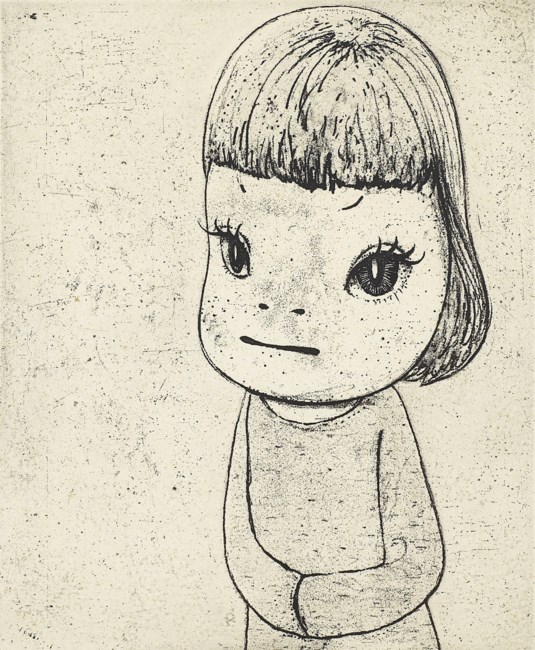
Conclusion: Why Does Nara’s Art Matter?
Nara’s art is not only beautiful but also has cultural and social significance. It mirrors his personal experiences and perspectives. Additionally, it reflects the identity and values of his generation and nation. His work confronts stereotypes and expectations from Japanese and Western viewers. These viewers might perceive and interpret his works differently. Nara mixes ukiyo-e and pop culture in his art. This blend initiates a conversation between history and modernity, and between tradition and innovation. It also bridges the gap between East and West, and between individual and communal experiences. His art encourages us to examine our own beliefs and emotions. It also promotes connections with others, whether they agree with us or not.
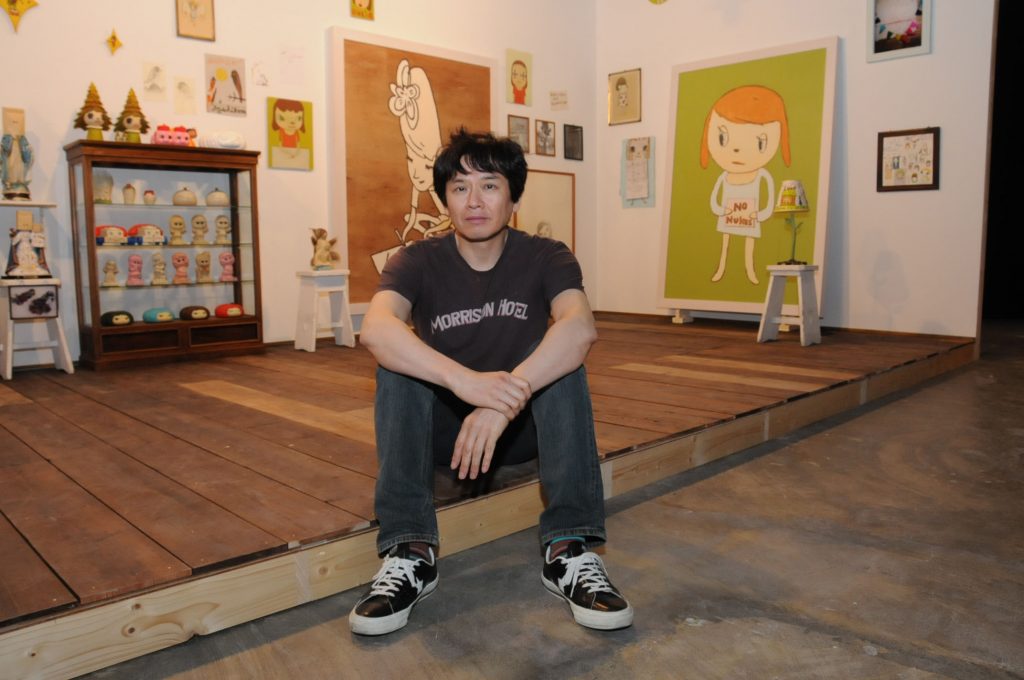
Read more:
- Kamisaka Sekka: A Maestro of Ukiyo-e’s Evolving Canvas
- Evolution of Japanese Woodblock Art: Ukiyo-e, Shin-Hanga, and Sosaku-Hanga
- The Enso Circle in Modern Design: Influences and Inspirations
- Yayoi Kusama: A Polka-Dotted Revolution in Art
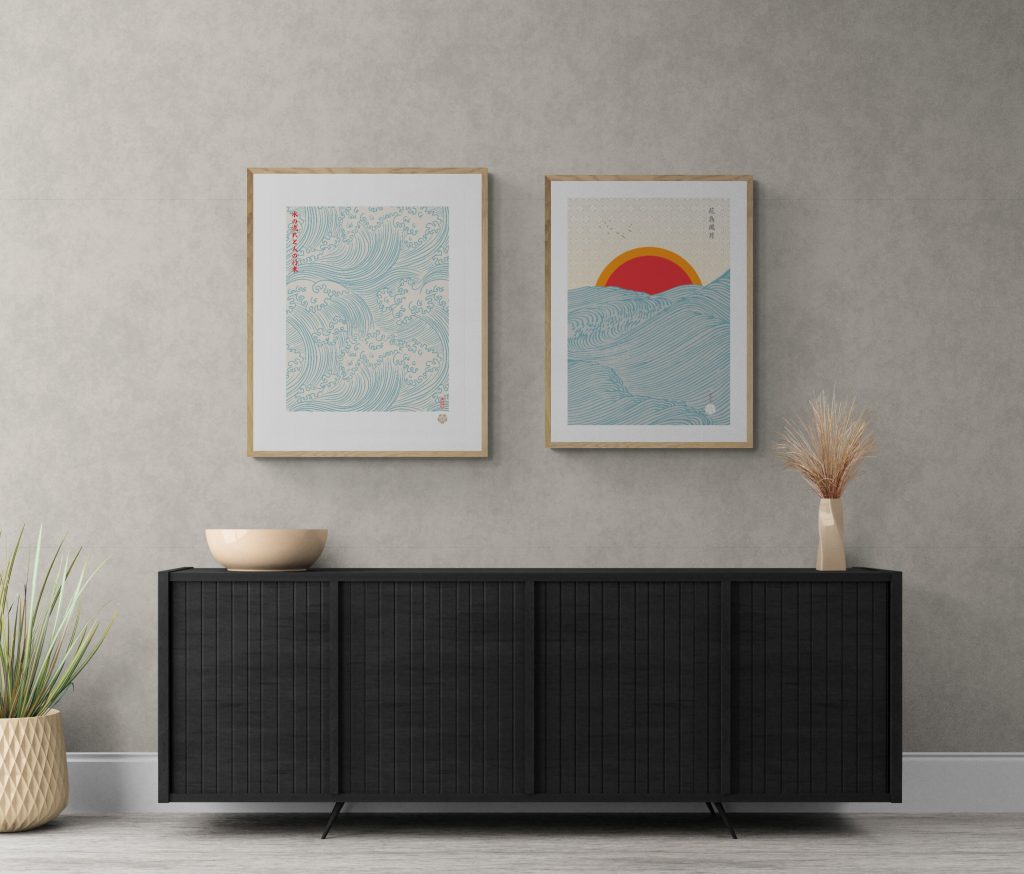
At The Art of Zen we carry a wide selection of our own hand-crafted original Japanese art prints in the ukiyo-e and Japandi style. Some of our best selling work is Mount Fuji wall art and Japandi wall art.
Add some zen to your space with brilliant original art from the Art of Zen shop.
Featured image at the top is the Cosmic Girls Print by Yoshimoto Nara.
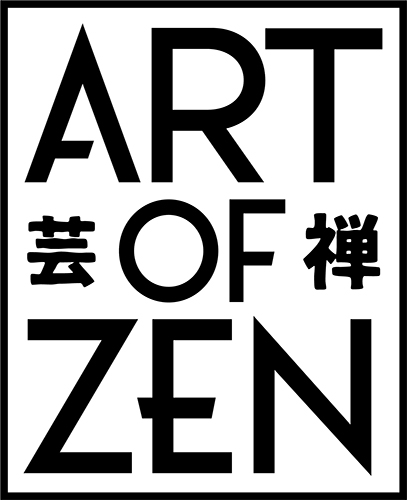
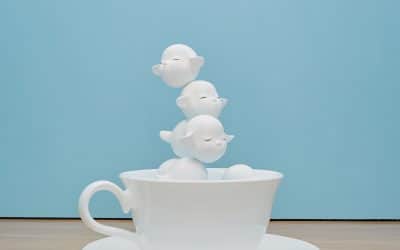
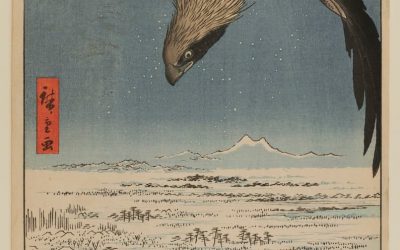
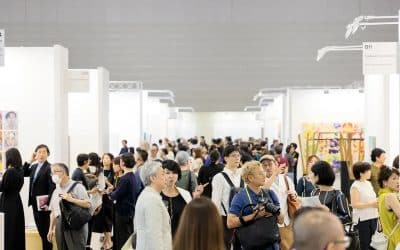
0 Comments